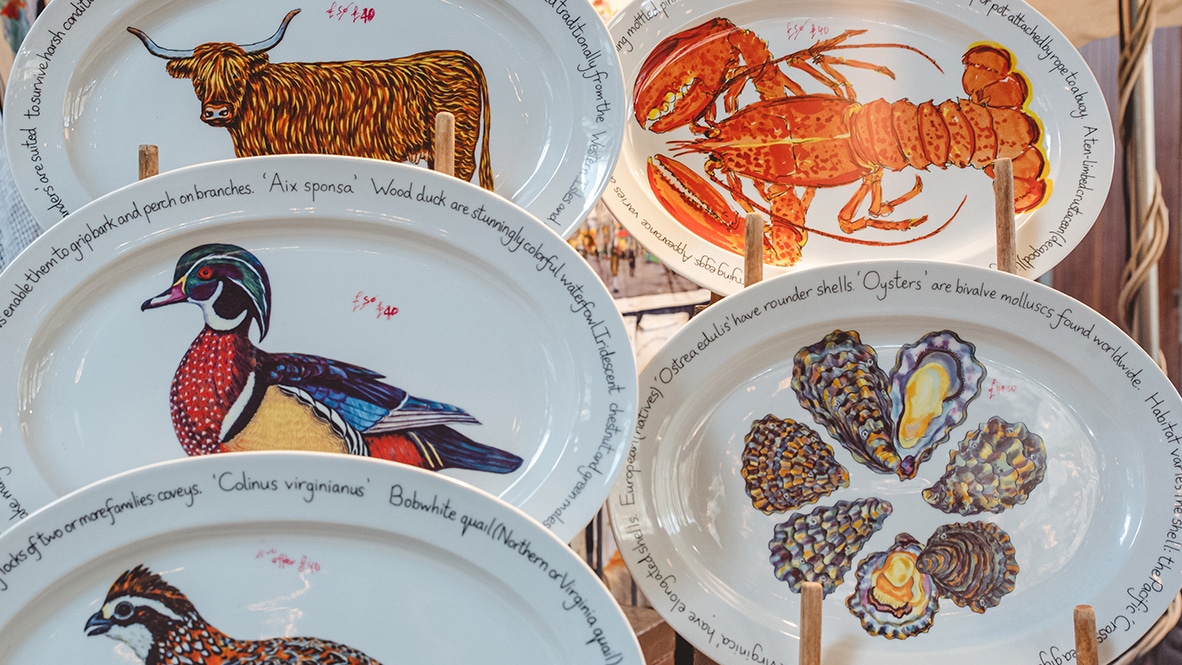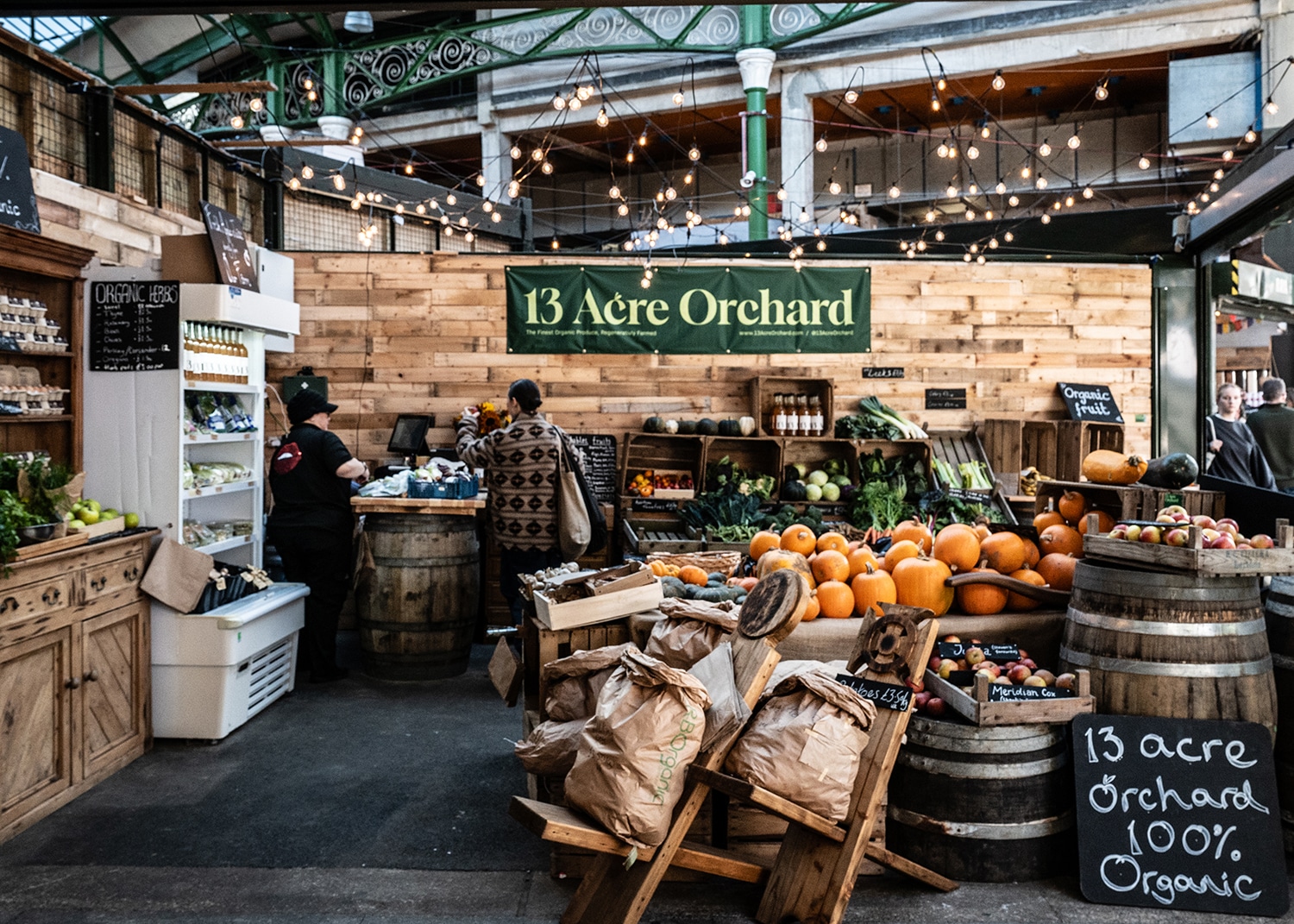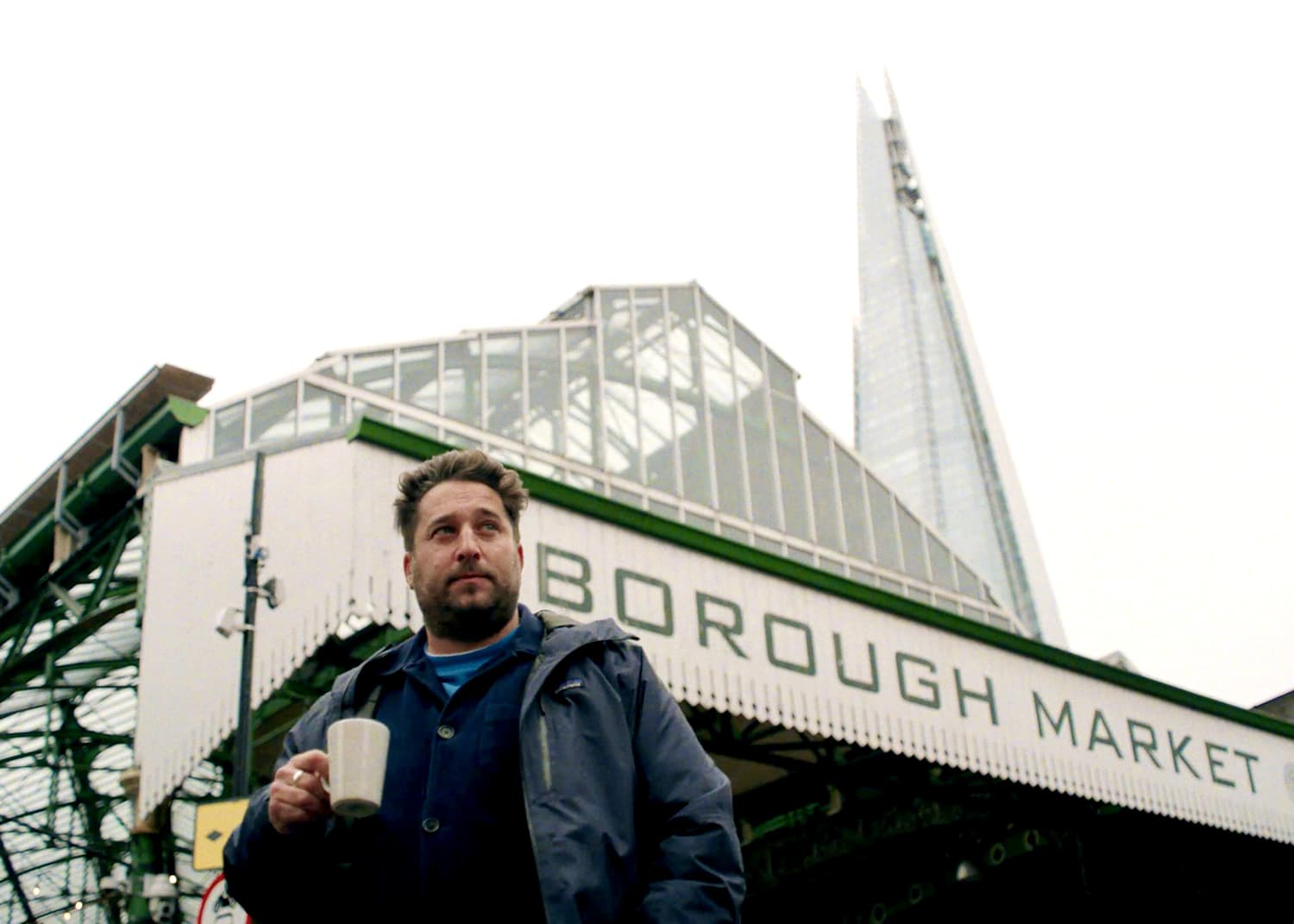Q&A: Dominic Coyte
The owner of Borough Cheese Company on British food culture, raw milk, and his lifelong pursuit of the perfect cheese
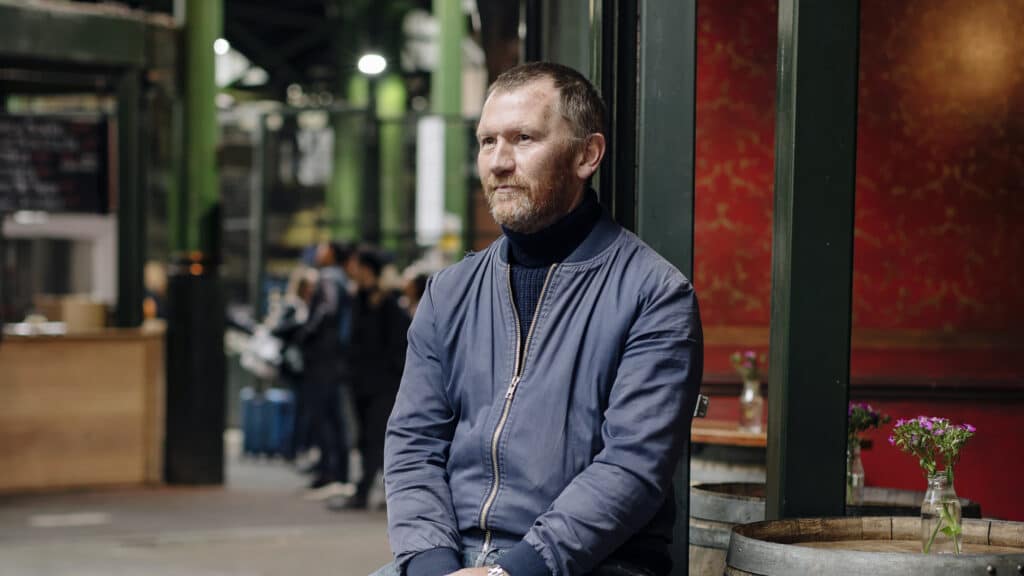

“THERE’S AN INHERENT DISCIPLINE TO PRODUCING RAW MILK THAT YOU MAYBE DON’T GET IF YOU’RE PASTEURISING”
Interview: Ellie Costigan / Portrait: Orlando Gili
How did you come to be a cheesemonger?
After I finished my master’s, I followed my girlfriend to London. Eventually she said: “You’re not staying on my floor any more, get yourself a job.” I saw Neal’s Yard Dairy’s advert in the Ham and High, which said, “Do you like cheese?” and I thought, oh yeah, I love cheese!
I went down to the shop in Covent Garden and was totally shocked by how pungent the aroma was – it was very ammoniacal. But then I tried the cheeses. They were extraordinary. I’d never had anything like them. I thought I’d be there for a year, max, but I stayed for 10.
You’re not the only cheesemonger at Borough to have learnt their craft at Neal’s Yard Dairy. What it is about the institution that draws people in?
Neal’s Yard Dairy takes what it does really seriously. It’s an innovative company, and it’s doing something really interesting. They introduced the public to a broader swathe of cheeses, made on a small scale, that can be really variable from day to day, instead of every batch tasting the same – I think it’s that natural variation that particularly interests people who have come out of Neal’s Yard. We’re all fascinated by it.
At Borough Cheese Company, you sell a small selection of ‘iconic’ European cheeses. What was the thinking there?
My friend Jason, who also worked at Neal’s Yard, went to the Jura Mountains to buy some comté and asked me if I wanted to sell it with him. This was the very early stages of the retail market at Borough Market and we saw an exciting commercial possibility here, so we left our jobs and carried on importing comté. After that, the addition of each cheese happened very organically. The second one we started selling was mont d’Or, a seasonal cheese from the same region of France, Franche-Comté. After that came tome St Antoine. We had the hard, the soft, and the tome was something in between. The gouda came fairly recently, from our friends Betty and Martin Koster, who sell Dutch cheeses in Amsterdam. Then the latest addition was the feta from Tastanas creamery in Lesbos. We wanted something for the summer months, when the heaviness of comté might not be attractive to some people – though I don’t mind it! But we’ll never expand beyond what we’re capable of looking after to a very high standard.
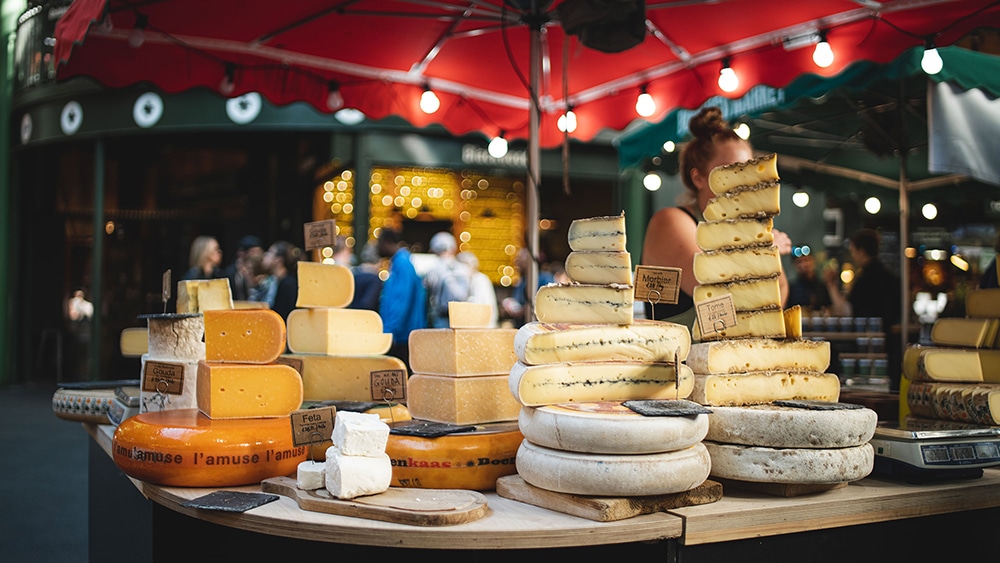
What qualities do you look for in a cheese?
Firstly, I have to love it. More technically, I look for cheeses that have a length of flavour – ones that have a good initial impact that lingers in the mouth. If you’re not left with a satisfying aftertaste, that is not the cheese I’m after. There are also various specific things you look for with each cheese. Take comté: you should be able to bend it. If you tried bending a sample of cheddar it would just snap immediately. The reason you can bend good comté is that acidification happens at a point in the process that means you do not lose as much calcium as you would otherwise, which gives it this tensile strength. If you can’t bend it, it means the make was too acidic.
With the feta, we tried a number of examples. We stayed in a monastery where it was being made by nuns. It would have been great to have bought from them, but they only made about four tonnes a year and the cheese was a bit short in flavour, a bit tight in texture – it had none of the soft, open-rangy flavours we got from the feta we eventually went for.
Is it difficult to discover producers who have found that balance between scale and quality?
I recently tried some stilton made by a guy in his kitchen, produced from the milk of a herd of eight cows. It was delicious. I asked him, “How can I buy some of this?” And he said, “You can’t. That’s not what I want to do.” To be able to sell it, his kitchen would have to be regulated, he would have to deal with all the admin, he would maybe have to employ someone else. It got me thinking about the sliding scale that exists between enabling something to be sold commercially and losing the romanticism that drew you to the cheese in the first place. I think the cheese cooperatives in the Franche-Comté have found a good way of working around it.
How do those cooperatives work?
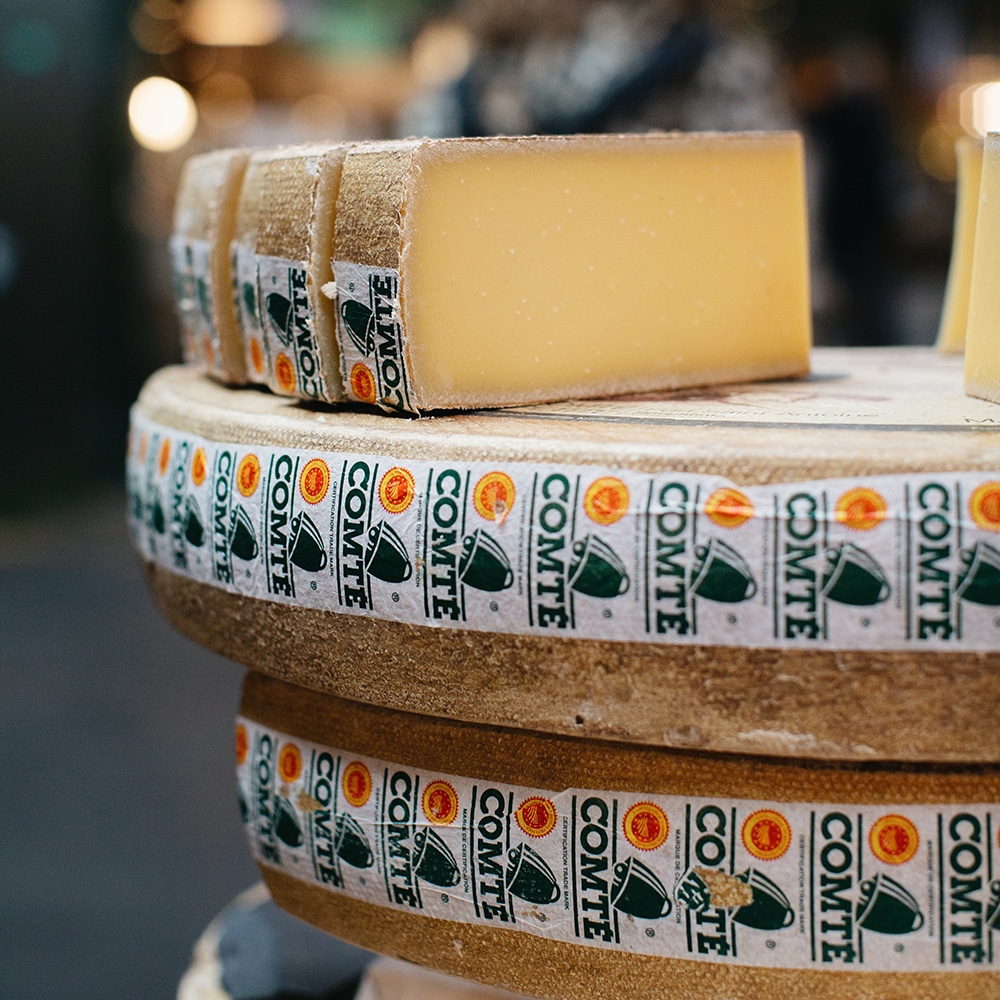
Each cheese producer – or ‘fruitière’, as they’re known in the region – works with the surrounding dairy farmers in their village. Even very small producers are making, say, 10 wheels of comté a day. They’re three feet across and 35 kilos, and they need to be matured before they are ready to sell, so where are they going to put them all? Each fruitière has a contract with an ‘affineur’ – a cheese maturer – who picks them up. The three French cheeses we sell come through Marcel Petite, an affineur who we visit every five weeks. He matures everything in an old fort, which was built in the 1880s.
There has been a boom in farmhouse cheese production in recent years. Is British cheese culture catching up with the rest of Europe – in terms of production, but also in our respect for and interest in artisanal cheeses?
It’s a big question. You have to look at the history of what’s gone on over here in the last 100 years or so. Because of industrialisation and the growth of the railways – so the ability to transport your milk as liquid rather than having to turn it into cheese – a lot of milk ended up being taken away from cheesemaking. The world wars and the rationing period consolidated cheesemaking around recipes that keep their integrity for longer, so low-moisture cheeses like cheddar. Then the last 40 years have seen the growth of supermarkets and the demand for scale and convenience. You can understand why that convenience element was attractive, but it’s to the detriment of the small farmhouse cheesemaker.
Having said that, Neal’s Yard Dairy has been going for 30 years and has helped to raise the profile of British farmhouse cheeses such that if you go to any deli in America worth its salt, they’ll have heard of Montgomery cheddar or Colston Basset stilton. That’s an incredible thing. So, it’s not all doom and gloom. Borough Market has been an amazing platform for regional cheeses and the sort of stuff I sell: quality products. Markets have a really fundamental role to play in encouraging the production of small-scale foodstuffs, whether that be bread, beer or cheese, and celebrating their variability, rather than what a supermarket does which is to say, “No, I want it to be exactly the same as last week.” There needs to be an ongoing change in cultural attitudes, which is not going to happen overnight and hasn’t happened definitively.
So, do you think cheese is undervalued?
The biggest ongoing discussion I have had over the years is about price: “I can get this in a supermarket and it’s this price.” Of course you can, but it’s going to be much younger, the quality isn’t going to be anywhere near the same, and you don’t have me looking after it and sharing it with you at its best. it’s important that people understand that.
The value of milk is a problem, too. The last figures I read, they reckoned the average cost of producing milk was about 25p a litre. The price paid to the farmer was about 22p a litre. It’s shocking. Every year you look at the figures and there are fewer dairy farmers than the year before. We have to value it more.
In the USA, Australia and New Zealand, for example, the use of raw milk is effectively banned. What are the arguments in raw milk’s favour?
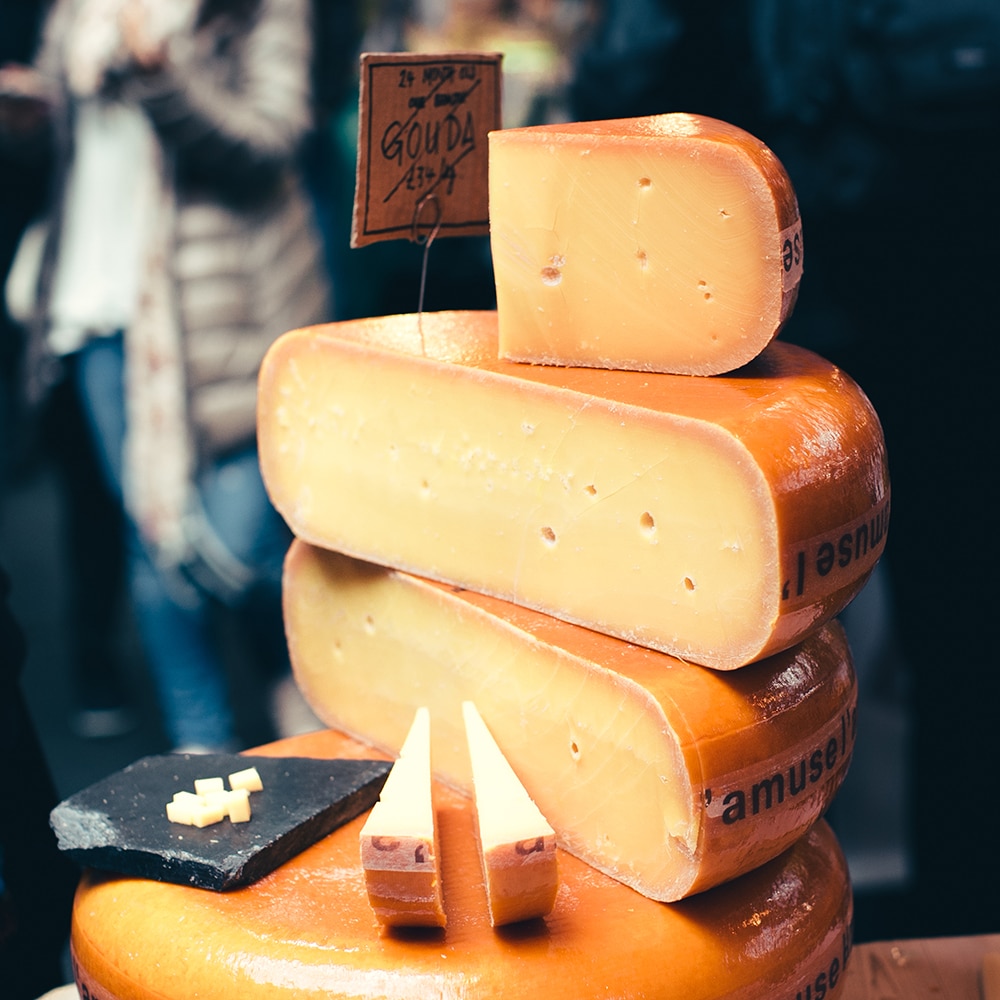
One important change that’s happened over here in the last 30 years is the establishment of the Specialist Cheesemakers Association. One of its functions is to gather people together to think about raw milk: what’s happening with it, how safe is it? I think some of the conclusions would surprise people. With good systems of manufacturing and hygiene, there’s nothing inherently dangerous in raw milk – and the benefits in terms of flavour are huge, which in turn can stimulate interest in cheese. In fact, there’s an inherent discipline to producing raw milk that you maybe don’t get if you’re pasteurising: why bother being so scrupulous about things if at the end of the day you’re going to pasteurise the hell out of it. Raw milk is great, you just need a system where you have total trust in the procedures and processing.
Do you think the treatment of animals in the industrial dairy sector is a problem?
I think the dairy industry has lots of questions to answer, not least about animal husbandry. In some of these big dairies, they’re taking 50 litres a day per animal. There are only so many milkings they can endure before they’ve had it. That is not good. Nor is the amount of land we are using to grow cereals to feed those animals. I’m not an agro-economist, but I think we need to strike some kind of balance between growing enough to make a successful business, and gearing it to the local economy.
One of the problems is supermarkets – these massive leviathons that need constant feeding. Imagine the infrastructural difficulty in trying to supply this cavernous appetite via smallholdings. They just cannot do it, they’re not geared up for it. Which is why I think Borough is so important. It offers a template for a way of retailing that’s outside the norm. People will say, “Well, look at the average protein intake of the individual – it’s gone up thanks to supermarkets, and nutrition is much better.” That’s a very good thing, obviously, but there’s got to be some middle ground.
On a lighter note, is a 12-month aged comté the perfect cheese?
I do like that creaminess and the nutty flavours you get. Over the last few years, I have noticed a trend for people wanting older comté. In my opinion, a lot of older cheeses can have a very strong impact, but without much complexity – it’s a hotness, like a spice, the range of flavour is lost and the mouthfeel less sophisticated. But these are just trends: we have to stick to our guns and believe in what we do.
Are you still as in love with cheese as ever?
I’m a cheese nut. By 11 o’ clock I think, where is the cheese?! I’ve got to have some, now. I never get bored of it. Every day is just a new day to eat cheese.
